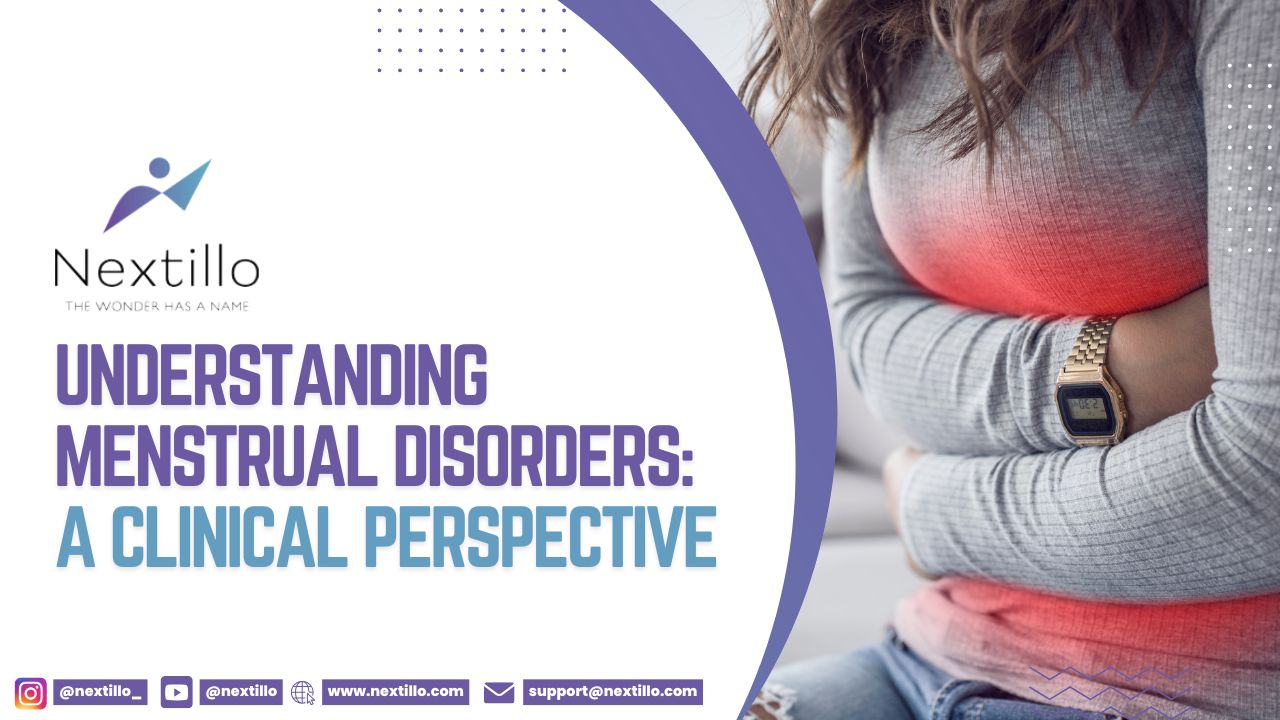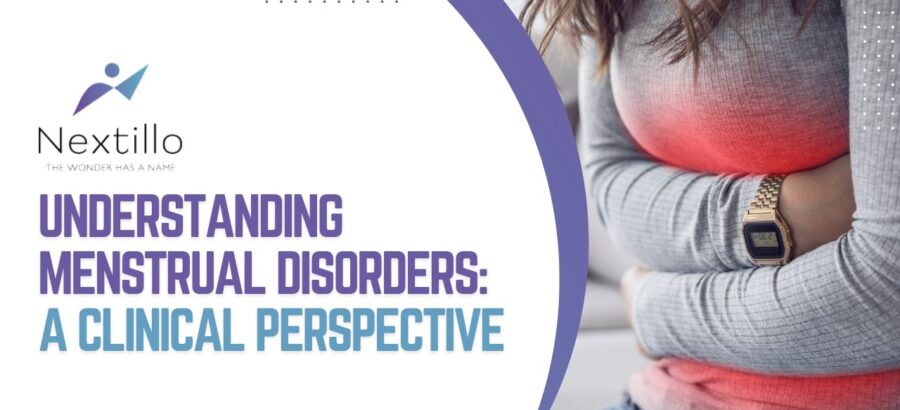Before we deal with menstrual disorders first, we will learn what menstruation means and when it is abnormal. Menstruation is vaginal bleeding that occurs every month and is often called a period. Menstruation is a natural procedure for females, signifying reproductive health and fertility. It is a 24-to-38-day cycle. Day 1 is considered the first day of vaginal bleeding. The uterus in the body develops the lining of tissue to support the pregnancy, but when fertilization doesn’t occur, the hormonal changes cause the shedding of the lining of the uterus. The blood is mixed with tissues, which pass from the uterus to the cervix and come to the outer world through the vagina. Average menstrual cycle is 28 days.
What Are Menstrual Disorders?
Menstrual disorders refer to any condition that causes irregularities or abnormalities in the menstrual cycle. It includes changes in the length, flow, or frequency of menstruation.
Common Types of Menstrual Disorders
- Amenorrhea
- Dysmenorrhea
- Menorrhagia
- Premenstrual Syndrome (PMS)
- Oligomenorrhea
- Premenstrual Dysphoric Disorder (PMDD)
- Polycystic Ovary Syndrome (PCOS)
- Metrorrhagia
Amenorrhea is defined as the absence of menstruation. It is of two types, which are primary and secondary amenorrhea. Primary amenorrhea is when menstruation has not begun by the age of 16, while secondary amenorrhea refers to the cessation of periods in females who have previously menstruated regularly for at least 3 months.
Causes:
- Hormonal imbalances (e.g., thyroid disorders)
- Extreme Weight Loss
- Stress
- Polycystic ovary syndrome (PCOS)
- Excessive exercise
Dysmenorrhea is defined as painful menstruation, often called painful cramps in menses. It is again of two types, primary and secondary. Primary dysmenorrhea is defined as common menstrual cramps without an underlying medical condition, and secondary dysmenorrhea is defined as pain due to an underlying health condition, such as endometriosis and fibroids.
Causes:
- Prostaglandin release (natural chemicals in the body that cause the uterus to contract)
- Hormonal Imbalances
- Endometriosis
- Pelvic Inflammatory Disease (PID)
Menorrhagia: it is defined as heavy, prolonged, or excessive menstrual bleeding in a normal menstrual length period.
Causes:
- Hormonal imbalances
- fibroids
- polyps
- endometriosis
- clotting disorders.
Symptoms: Soaking through one or more pads or tampons every hour; menstrual bleeding lasting more than seven days; and symptoms of anaemia like fatigue or dizziness.
Oligomenorrhea is defined as irregular or infrequent periods, typically less than six cycles per year.
Causes:
- Hormonal imbalances
- PCOS
- Thyroid Problems
- Excessive physical or emotional stress.
Premenstrual Syndrome (PMS): A range of symptoms that occur before menstruation that affect the mood, physical health, and behaviour.
Causes:
- Hormonal fluctuations
- Genetics
Symptoms:
- Bloating
- Fatigue
- Mood swing
- Irritability
- Breast tenderness
- Cravings
Premenstrual dysphoric disorder (PMDD) is defined as a severe form of PMS that can cause debilitating symptoms that affect the daily life of a woman.
Causes
Hormonal changes related to the menstrual cycle.
Symptoms:
- Severe mood swings
- Depression
- Anxiety
- Irritability
- Fatigue
- joint or muscle pain
- sleep disturbances.
Polycystic Ovary Syndrome (PCOS) is defined as a common hormonal disorder that can cause irregular periods, ovarian cysts, and issues with fertility.
Causes:
- Insulin resistance
- Elevated levels of androgens (male hormones)
- genetic factors.
Symptoms:
- Irregular or missed periods
- excessive hair growth (hirsutism)
- acne
- thinning hair
- abdominal weight gain.
Read more: Gynecology Blogs for Fmge and Neet PG Preparation
Now let’s discuss what are the main causes of menstrual disorders
- Hormonal fluctuations
- obesity
- Genetics
- PCOS
- Excessive physical or emotional stress.
- Insulin resistance
- Elevated levels of androgens (male hormones)
Medical conditions which are linked with menstrual disorders
- Infections
- Thyroid Problems
- blood clotting disorders, e.g., Von Willebrand’s disease.
- Idiopathic Thrombocytopenic Purpura (ITP)
- Liver Or Kidney Disease
- Leukemia
Gynaecologic conditions which cause the menstrual disorders are
- IUD
- Fibroids
- Miscarriage
- Ectopic pregnancy
- Endometriosis
- PCOS
Diagnosis is made by
- Blood tests
- Hormonal tests
- Ultrasound
- Hysterosonography
- Magnetic resonance imaging (MRI)
- Hysteroscopy
- Laparoscopy
- Endometrial biopsy.
- Dilation and Curettage (D&C)
Treatment
- Lifestyle modifications through diet, exercise, and stress management are very essential in hormonal balancing.
- Medications like birth control pills, which help in regulating the menstrual cycle and heavy bleeding.
- NSAIDs are used to treat the pain from conditions like endometriosis and dysmenorrhea.
- The metformin drug is used to treat and regulate the insulin levels in PCOS.
- Tranexamic acid is prescribed to treat the heavy flow of bleeding.
- Hormone therapy may be helpful in irregular period if it is due to perimenopause
- Gonadotropin-releasing hormone agonists help to shrink the size of uterine fibroids and control heavy bleeding, but the disadvantage is that they stop the menstrual bleeding for shorter period.
- Surgical treatment like laparoscopy and hysterectomy is done in severe cases where the symptoms don’t subside.
When to see a doctor?
Here are the following symptoms, which, when present, indicate that there is a need for a Gynaecologist visit or healthcare provider.
- Menses, which last for period, i.e., for more than 7 days.
- Excessive blood flow during menses, which causes fatigue and anemia.
- Severe pain which interferes in daily activities
- Missed periods or irregular cycles of periods.
- symptoms like excessive hair growth, acne, or weight gain.







